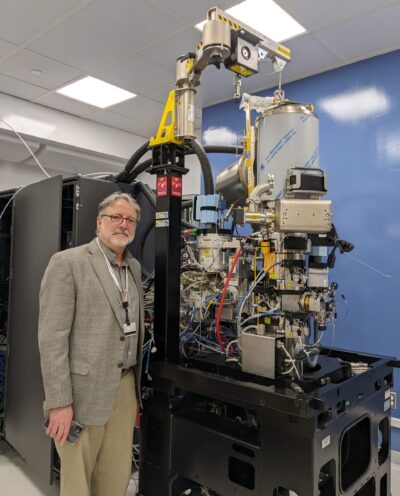Celebrating the ‘First Light’ of the New CryoEM

The ‘First Light’ of Boston University’s Glacios-2 cryogenic electron microscope (cryo-EM) is an exciting step in the setup of the new Cryo-EM Core Facility.
Located on the Medical Campus, there are 25 research groups across the university ready to use the new core, including teams from the dental and medical schools along with the College of Art & Sciences and College of Engineering.

With this new instrumentation, investigators will be able to advance scientific discoveries in health and disease by determining structures of macromolecules at near-atomic resolution. Samples are frozen so quickly that the water freezes as a glass, providing samples that are kept in a near-native state.
Thousands of images will be collected daily and analyzed using computers in the facility and at the Boston University Shared Computing Cluster. Planned experiments include studies on the heart, muscle, Alzheimer’s disease and other neurodegenerative disorders, G protein coupled receptor complexes, bacterial and viral infections, enzyme function, nanoparticles and protein biosynthesis and transport.
This is BU’s first cryo-EM core facility, updating older cryo-EMs located in the department of pharmacology, physiology & biophysics.

The cryo-EM was funded, in part, by a National Institutes of Health Shared Instrumentation Grant awarded to Professor of Pharmacology, Physiology & Biophysics Esther Bullitt, PhD. The expansion of EM facilities and recruitment of structural biology faculty has been one of the high-priority goals for Vanna Zachariou, PhD, Edward Avedisian Professor and chair of the department.
A ‘First Light’ gathering was held Friday to celebrate the inaugural electron beam from the instrument, which was configured by Dean Antman. Alignment and testing of the Glacios-2 are continuing, and it is expected the facility will be ready for use in the near future.
